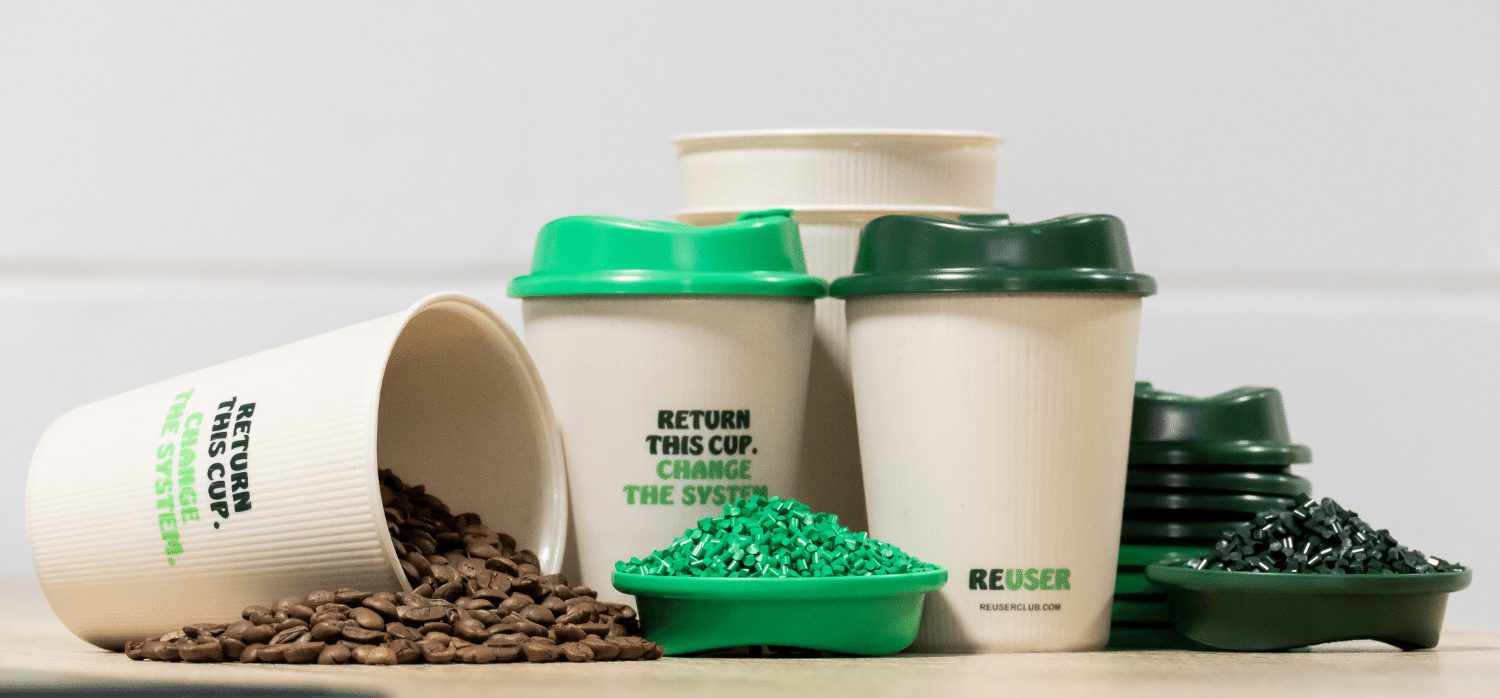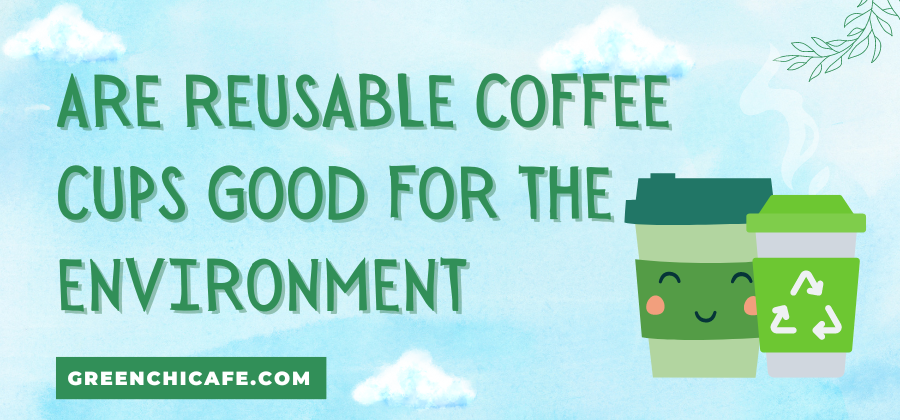Reusable mugs and tumblers for hot beverages promise environmental savings over endless disposable cups.
But how much sustainability benefit do reusable coffee cups truly offer once their entire lifecycle impacts are considered?
This article investigates the carbon emissions, waste generation, and resource consumption of different coffee cup options.
Are Reusable Coffee Cups Good for the Environment?

When consistently used over many years, reusable coffee cups provide sustainability benefits over single-use disposable cups by reducing waste and embedded material impacts.
But material choices and consumer behavior significantly influence the net environmental value of reusables.
Key Points
- Most single-use cups end up incinerated or landfilled instead of recycled.
- Reusables have higher upfront carbon costs but avoid future cup waste.
- Responsible material selection and consistent reuse optimize sustainability.
How Are Disposable Cups Commonly Managed?
Estimates suggest less than 1% of single-use paper coffee cups are recycled despite many being technically recyclable due to plastic linings.
The rest end up incinerated or landfilled where they persist due to slow decomposition.
Recycling programs face challenges collecting and cleaning small volumes of liquid-contaminated cups.
Many consumers erroneously toss hot beverage cups in the wrong bins.
But recycling single-use cups into new materials still reduces their huge contribution to landfill waste.
Could Reusables Have a Larger Carbon Footprint to Produce?

Yes, producing a ceramic mug or stainless steel tumbler emits more greenhouse gases initially than typical single-use paper cups.
Factors like material processing, manufacturing, and transportation result in higher embedded carbon for reusables.
But through prolonged reuse preventing cup waste, durable options quickly offset their production impacts through avoided disposable cup use.
Cup composition and lifetime mileage vary in eco-payback periods.
Do Reusables Need to Be Washed Frequently?
Reusable cup materials like glass, ceramic, and stainless steel can be simply rinsed with water between uses if not visibly soiled.
More thorough periodic hot water washing with soap removes odor-causing residues.
Hand washing rather than energy-intensive dishwasher cycles further lower the environmental footprint.
Common hygiene guidance for reuse limits the need for constant rewashing.
Overall, occasional proper cleaning minimizes energy, water, and detergent use.
Could Reusable Cup Materials Impact Sustainability?
Yes, material choices make a difference.
Reusables made of plastic can still leach chemicals, be difficult to recycle after use, or cause fossil fuel emissions during production.
Ceramic cups may involve high-temperature kiln firing.
Stainless steel has the highest embedded carbon but is durable and recyclable.
Plant-based compostable cups must be industrially composted to avoid contamination as litter.
Consumers should research materials and opt for reusables made from recycled content using eco-friendly manufacturing.
Do Reusables Actually Get Reused Often Enough?
Getting the most mileage out of reusables is key to offsetting their production impacts.
But studies show reusable cups often fall out of rotation quickly after purchase and may end up in landfills faster than the estimated usable life.
To maximize sustainability benefits, consumers must be committed to bringing reusables when purchasing beverages and not accidentally discarding them over time.
Using reusables for many years until worn out or recycling responsibly keeps them from becoming wasted products themselves.
Could Reusable Cup Rental Systems Work?
Some coffee shops and colleges have implemented reusable cup rental systems where customers pay a deposit to use a provided mug and return it later for a refund.
This eliminates the customer’s upfront embedded cost while providing reusable cups with controlled lifespans, cleaning, and reuse rates.
However, logistics around redistributing returned cups may decrease program scalability.
Overall, rental models encourage reusability while guaranteeing optimal reuse rates when managed properly.
Are Reusable Coffee Cups Sustainable?
Reusable coffee cups can be a sustainable choice when properly used and maintained.
Materials like stainless steel and glass have lower footprints than constantly disposing of single-use cups.
With regular use preventing cup waste over the years, reusables offset higher initial production impacts.
Responsibly sourced, recyclable materials further enhance sustainability.
However, actual environmental benefits depend on consumer behavior.
Reusables negligibly used, quickly discarded, or made from unrecyclable materials may increase net waste and emissions relative to disposables.
But refillable cups washed and used regularly for a full lifespan realize their pollution reduction potential and are clearly the more sustainable option.
What is the Most Environmentally Friendly Coffee Cup Material?
Stainless steel is among the most eco-friendly reusable coffee cup materials.
Steel cups have had high durability for years of use.
Recyclable steel requires 60% recycled content, further reducing impacts.
While stainless manufacturing has high energy intensity, thorough multi-year utilization offsets this and avoids ongoing cup waste.
Glass and ceramics also have low carbon footprints when locally produced. Ceramics utilize water for processing.
Silicone cups avoid breakage but may be difficult to recycle.
Plant-based bioplastics compost best but have higher carbon costs.
Overall, stainless steel provides excellent sustainability with responsible production methods and consumer reuse.
Key Takeaway:
- Reusable coffee cups can provide sustainability gains over disposables when used consistently and responsibly.
- But material choices and consumer habits significantly impact net environmental benefits.
- Conscious cup selection and dedicated use enable reusables to play a meaningful role in reducing coffee’s waste footprint.
FAQ
How Often Should Reusables Be Washed?
Reusable cups only need thorough hand washing with soap periodically when visibly soiled. Daily rinsing or wiping is sufficient for casual use.
What Is the Most Sustainable Reusable Cup Material?
Stainless steel, glass, and ceramics have the lowest environmental impact when sourced and manufactured responsibly and reused consistently.
Do Reusables Reduce Plastic Waste?
Yes, reusables avoid the plastic lids and liners used in most single-use paper coffee cups, reducing non-recyclable plastic waste over time.
GreenChiCafe shares tips to lighten your environmental footprint through mindful consumer choices.
Visit our website to learn more.
